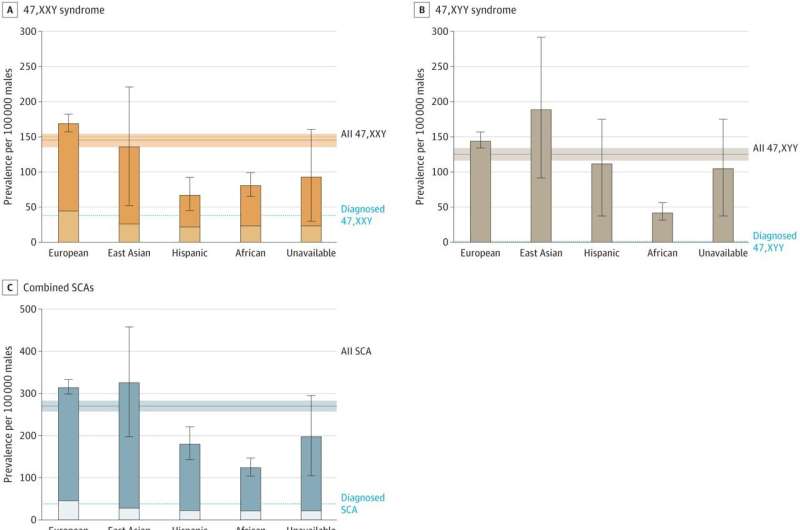This article has been reviewed according to Science X's editorial process and policies. Editors have highlighted the following attributes while ensuring the content's credibility:
fact-checked
peer-reviewed publication
trusted source
proofread
Veterans help provide greater insight into Klinefelter and Jacobs syndromes

Researchers at the University of Colorado Anschutz Medical Campus and collaborators across the country have conducted the largest and most diverse study of men with extra X or Y chromosomes in the US using a large dataset of military veterans. The results could lead to better diagnoses of these underrecognized conditions and earlier treatment of associated diseases.
The study was published in JAMA Network Open.
"One in 400 males have an additional X or Y chromosome, how. However, 86 percent of these individuals are not diagnosed," said the study's first author Shanlee Davis, MD, Ph.D., associate professor of pediatrics at the University of Colorado School of Medicine. "This study supports that men with X and Y variations successfully serve in the US military but experience many medical and psychiatric comorbidities that could potentially be prevented with appropriate diagnosis and care."
Men with an extra X chromosome, known as Klinefelter syndrome, or Y chromosome, also known as Jacobs syndrome, have an increased risk of delayed development, learning disabilities, type 2 diabetes, and cardiovascular disorders. Men with Klinefelter syndrome also have impaired testicular function associated with low testosterone and infertility. All of the research we have on these conditions is from the <15% who are clinically diagnosed and are almost entirely of Western European ancestry.
Nearly 600,000 veterans in the Million Veteran Program (MVP) were involved in this study—the first to look at a more diverse population. Through genetic analysis, an extra X was found in 862 men and an extra Y in 747 men—similar rates to the general population.
Unexpectedly, this research revealed that white and Asian veterans had the highest prevalence of the syndromes with black and Hispanic veterans having the least. Most do not know about their extra X or Y, but those without a clinical diagnosis were similarly affected to those who were previously diagnosed.
"There's still a lot we don't know about these men who have gone years without a proper diagnosis," Davis said. "Studying this aging population will allow us to learn the risks associated with extra X and Y chromosomes, even when we do not know about the genetic difference clinically. Early identification of these conditions, which is now often happening prenatally, gives us an opportunity to prevent some of the illnesses associated with Klinefelter and Jacobs syndromes."
More information: Shanlee M. Davis et al, Prevalence, Morbidity, and Mortality of Men With Sex Chromosome Aneuploidy in the Million Veteran Program Cohort, JAMA Network Open (2024). DOI: 10.1001/jamanetworkopen.2024.4113


















